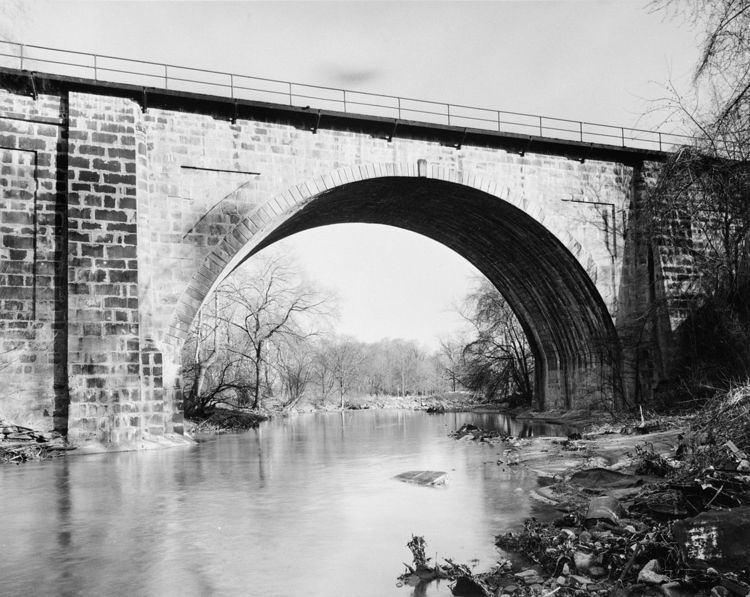Carries Railroad Address Balti, MD 21230, USA Height 20 m Location Balti | Material Granite Opened 1829 Total length 95 m | |
 | ||
Bridge type Arch bridge, Deck arch bridge Similar Patterson Viaduct, Thomas Viaduct, Bollman Truss Railroad, Hanover Street Bridge, Ellicott City Station | ||
Carrollton viaduct baltimore maryland trailer
The Carrollton Viaduct, located over Gwynns Falls near Carroll Park in Baltimore, Maryland, is the first stone masonry bridge built for railroad use in the United States.
Contents
Description
The bridge is currently one of the world's oldest railroad bridges still in use for rail traffic, carrying loads far greater than originally envisioned. It was named after Charles Carroll of Carrollton, the last living signer of the Declaration of Independence and a director of the Baltimore and Ohio Railroad, who laid the cornerstone on July 4, 1828. As he laid the first stone he said, "I consider this among the most important acts of my life, second only to my signing the Declaration of Independence." Builder Caspar Wever and designer James Lloyd completed the structure for the railroad in November 1829, at an officially listed cost of $58,106.73. The actual cost of the construction may have been as high as $100,000.
The bridge, 312 feet (95 m) in length, rises from its foundations about 65 feet (20 m). It is 51 feet 9 inches (15.8 m) above Gwynns Falls. It consists of a full-centered arch with a clear span length of 80 feet (24 m) over the stream, and a space for two railroad tracks on its deck. To provide an underpass for a wagon road, an arched passageway, 16 feet (5 m) in width, was built through one of the masonry-walled approaches. Originally planned as one arch of 40 feet (12 m) chord, the dimensions were enlarged to quiet the concern of the proprietor of the mills located immediately above the bridge site, who feared that 40 feet would be insufficient if the stream was flooded. The heavy granite blocks which form the arches and exterior walls were procured from Ellicott's Mills and Port Deposit. A temporary wooden framework supporting the central span held 1,500 tons (1,360 tonnes) of this stone during construction. A white cornerstone at one end of the bridge bears the inscription "James Lloyd of Maryland, Builder A.D. 1829."
Andrew Jackson, the first President of the United States to ride on a railroad train, crossed the bridge on a trip between Ellicott's Mills and Baltimore on June 6, 1833. The Carrollton Viaduct has provided continual service to the Baltimore and Ohio Railroad and its modern corporate successor, CSX Transportation.
The viaduct was designated a National Historic Landmark on November 11, 1971 and was automatically listed on the National Register of Historic Places the same day.
In 1982 the viaduct was designated a Historic Civil Engineering Landmark by the American Society of Civil Engineers.
